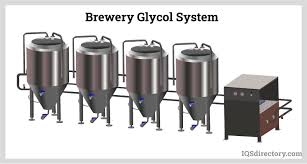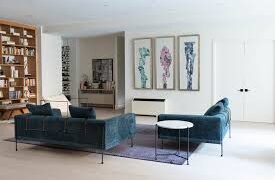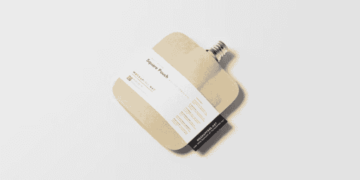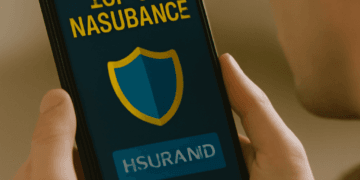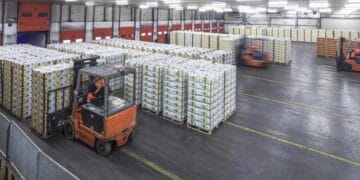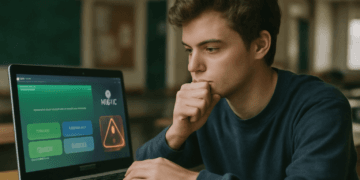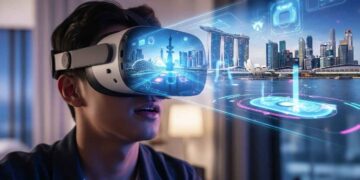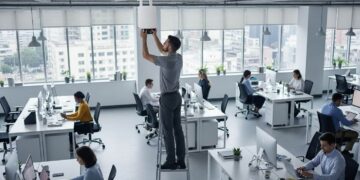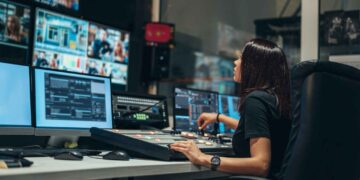Imagine connecting your 5th-grade classroom in California with students in Tokyo, or pairing your high schoolers with peers in London. Global classroom collaboration creates transformative learning opportunities by exposing students to diverse perspectives, building cultural competency, and developing essential 21st-century skills. However, coordinating learning activities across significant time zone differences presents a major challenge—when your students are starting their school day, their international partners might be heading to bed.
Gimkit offers an innovative solution to this time zone dilemma. This interactive learning platform goes far beyond traditional quizzes (if you want a deep dive, check out our guide on the main features of Gimkit), providing flexible tools that enable both synchronous (live) and asynchronous (flexible-schedule) collaboration. Gimkit excels at this through three key strategies: (1) Timed Assignments that students complete on their schedule, (2) KitCollab for joint content creation regardless of location, and (3) Strategic “Global Meet-Up” sessions during overlapping time windows.
This comprehensive guide, based on lessons learned from years of managing global classroom projects, provides five ready-to-implement lesson plans, essential time zone management tools, and best practices for leveraging Gimkit to bridge time zones and create authentic international learning experiences.
Understanding Time Zone Challenges in Global Classrooms
Benefits of International Classroom Connections
Why invest the effort in international classroom projects? The rewards are immense. Students gain cross-cultural awareness, develop empathy, and become better global citizens by engaging with different ways of life. Research consistently shows the positive impact of global collaboration in education, enhancing essential 21st-century skills such as communication, collaboration, and critical thinking within a global context. This international education enhances essential 21st-century skills such as communication, collaboration, and critical thinking.
Synchronous vs Asynchronous Learning Approaches
The core challenge of connecting classrooms across time zones is managing scheduling conflicts. This is where the distinction between synchronous and asynchronous learning becomes critical:
| Approach | Description | Gimkit Use Case | Pros for Global Classrooms | Cons for Global Classrooms |
|---|---|---|---|---|
| Synchronous | Activities done together in real-time (e.g., live video calls, a live Gimkit game). | Live game modes played during an overlapping window. | Great for live debate, instant feedback, and building immediate personal connections. | Impossible to schedule for 12+ hour time differences; often sacrifices sleep for one class. |
| Asynchronous | Activities completed on each student’s own schedule without a set meeting time. | Gimkit Assignments and collaborative Kit building (KitCollab). | Ensures maximum inclusivity and accessibility regardless of location; allows for deeper reflection time. | Lacks real-time interaction; requires excellent communication regarding deadlines. |
A successful global education initiative often mixes both approaches strategically.
Gimkit Strategies for Bridging Time Zones
Synchronous Gimkit Activities (Live Global Meet-Ups)
Playing Gimkit live is incredibly engaging but demands careful planning to respect time differences. These strategies are best when time zones have partial overlap (e.g., a 4- to 7-hour difference) or for special, planned events.
Strategic Scheduling for Overlapping Time Zones
Identify a short window where both classes are reasonably awake. Plan short, high-energy synchronous Gimkit games during these “Global Gimkit Meet-Ups.” This might involve one class starting slightly early or the other ending slightly late. Crucially, rotate the meeting times from session to session to ensure fairness to all students over the course of the collaboration.
- Pro Tip: Pick fast-paced game modes that can be completed in short bursts (10-15 minutes) to optimize the limited synchronous time you have. If you’re looking for new ideas, review our article exploring Gimkit’s game modes.
Team-Based Play Across Countries
Utilize Gimkit’s Team Mode intentionally. Group students from close time zones onto the same team to facilitate easier real-time chat and collaboration during the live game. Even if the entire global group cannot be online at once, having smaller teams collaborate globally works well. For teachers looking to connect with international classrooms for such events, platforms like iEARN are invaluable for finding partners.
Asynchronous Gimkit Power (Flexible Learning)
This is where Gimkit truly shines in solving the time zone problem, allowing for flexible collaboration without requiring students to sacrifice sleep.
Gimkit Assignments for Time Zone Flexibility
Gimkit Assignments are the backbone of asynchronous global learning. Each class receives the same Gimkit game, and they can play it when it fits their schedule. You set a clear time limit (e.g., one week). This is excellent for remote collaboration on content review or pre-learning tasks.
Global Leaderboards and Challenge Boards
Turn Gimkit Assignments into a longer-term, fun asynchronous global challenge. Keep a running “Global Leaderboard” or “Challenge Board” tracking cumulative scores over days or weeks, making the asynchronous competition engaging without requiring live interaction. To easily follow your students’ results, be sure to utilize the platform’s ability to track student progress in Gimkit.
KitCollab for Joint Kit Creation
Use Gimkit’s KitCollab feature. Students from different global classrooms can add questions to the same Gimkit Kit whenever they are free. This is a powerful way to create a shared, collaboratively built learning tool, enhancing cross-cultural learning. For example, one class can create questions about their local history, and the other class adds questions about their culture.
Essential Time Zone Management Tools & Resources
Successfully connecting classrooms across time zones is primarily a logistical challenge. Using the right tools eliminates confusion and ensures everyone respects deadlines and meeting times.
1. The Best Time Zone Conversion Tools
| Tool | Feature | Benefit for Global Classrooms |
|---|---|---|
| World Time Buddy | Visual time slider interface. | Shows students exactly what time the meeting is in their location relative to yours and allows for easy comparison of 3+ cities. |
| TimeAndDate.com | Meeting planner feature. | Helps you find the optimal time window where both classrooms are awake and available. |
| Every Time Zone | Simple, graphical representation of global time zones. | Excellent for quickly determining if a time difference is 6 hours, 9 hours, or 12+ hours. |
2. Communication Best Practices
- Always State Dual Times: When planning a synchronous “Meet-Up” or setting a deadline for a Gimkit Assignment, use both time zones explicitly: “The game starts at 8:00 AM PST / 4:00 PM GMT.”
- Use Deadline Windows: For asynchronous work, provide a window instead of a single moment: “The Gimkit Assignment must be completed between Monday, 9:00 AM local time and Friday, 5:00 PM local time.”
5 Ready-to-Use Gimkit Lesson Plans for Global Classrooms
Here are five high-impact activities for global classrooms using Gimkit that successfully manage time zone differences.
1. Global Geography Challenge (Asynchronous Gimkit Assignment Project)
- Project Idea: Classes in different countries create a Gimkit Kit detailing their local geography, famous places, or cultural facts.
- Asynchronous Activity: The classes share their Gimkit Assignment codes. Students play the other class’s Kit on their own time, learning about different regions of the world. Discussion and reflection can then take place later on a shared forum like Padlet. To expand your tech stack for these projects, check out how you can team up with Gimkit, Flipgrid, and Padlet. This is a great way to learn geography in global education.
2. Intercultural Communication Game (Synchronous “Gimkit Meet-Up” Event)
- Project Idea: Classes prepare for a short, live “Gimkit Global Meet-Up” focused on cross-cultural communication. Pre-work involves learning basic phrases or cultural customs of the partner class.
- Synchronous Activity: During a short overlapping time window, play a fast Gimkit game mode. Questions should focus on global manners, fun facts about each other’s lives, and cultural vocabulary. This is a fun way to meet and learn about each other.
3. Global Issues Debate & Review (Blended Approach)
- Project Idea: Classes study a problem that affects the whole world (e.g., climate change, poverty) and look at it from their local perspective.
- Blended Activity:
- Asynchronous Phase: Students complete research and summarize findings in a shared online document (or similar tool).
- Synchronous Phase (Optional): Use a short video call to debate and share local views.
- Post-Synchronous/Asynchronous Review: Create a Gimkit Assignment with questions reviewing the problem, key vocabulary, and different local perspectives discovered during the project.
4. World Languages Vocabulary Exchange (Asynchronous KitCollab)
- Project Idea: Classes learning different world languages collaborate. One class (e.g., Spanish students) makes a Gimkit Kit with Spanish and English terms.
- Asynchronous Activity: They share the KitCollab link with another class (e.g., French students). The French class adds their French vocabulary to the same Kit, creating a trilingual resource. Both classes then use this Kit as a self-paced Gimkit Assignment for language practice. For more ideas on how to use the platform in the subject area, explore our guide to Gimkit for language learning.
Case Study: Successful 12-Hour Time Zone Collaboration
In 2023, I experimented with connecting my 8th-grade history class in New York with a partner class in Seoul, Korea—a challenging 13-hour time difference. Synchronous meetings were impossible without forcing someone to join at 4 AM.
The Solution: We relied 90% on Gimkit Assignments and KitCollab.
- Shared Curriculum: Both classes studied the Cold War.
- KitCollab: The New York class created questions about the US perspective. The Seoul class then used KitCollab to add questions about the Korean War and the Eastern perspective.
- Asynchronous Play: The completed, jointly created Kit was distributed as a Gimkit Assignment. The New York students would complete the assignment during their school day, and the Korean students would complete it during their day.
- Reflection: The scores, which were available instantly, prompted daily reflection posts in a shared, moderated Padlet forum, ensuring asynchronous interaction and debate about the content.
This strategy proved that meaningful global classroom collaboration is possible even with the most extreme time differences, provided you lean heavily on the flexibility of Gimkit’s asynchronous features.
Implementation Best Practices
To make your Gimkit games work well in global classrooms, keep these principles in mind:
Prioritize Asynchronous Activities for Maximum Inclusivity
Remember, asynchronous Gimkit activities (Assignments and KitCollab) are usually best for global classrooms. They ensure everyone can join in, regardless of their time zone. Make Gimkit Assignments the foundational part of your international collaboration plan.
Focus on Cultural Exchange and Collaboration
Gimkit can be highly competitive, but when working with global classrooms, shift the focus. For a deep look at the pedagogical choices, read about competitive vs. cooperative learning in Gimkit. Design your Kits and activities to prioritize sharing, learning together, and cross-cultural learning. Think of Gimkit as a vehicle for global connection, not just a way to win.
In any global project, remember that students are interacting with peers they do not know personally. It is essential to integrate lessons on Gimkit and digital citizenship to ensure safe, respectful, and ethical online communication.
Be Flexible and Adaptable to Global Classroom Dynamics
Working with international partners can be tricky. Be ready to change plans, extend deadlines, or adjust meeting times if needed. Maintain open communication with the partner teacher to see what works best. Enjoy the chance to connect with other cultures; the goal is connection, not perfection.
Conclusion
Using Gimkit for global classrooms is a highly effective way to help students connect across different time zones, fostering fun, engaging learning experiences and helping them become better global citizens. By strategically balancing synchronous “Meet-Ups” with the power of asynchronous Gimkit Assignments and KitCollab, you can overcome the challenges of scheduling and create a truly global place for learning.
Frequently Asked Questions (FAQs)
How can I effectively use Gimkit with students in different time zones?
Focus on asynchronous activities like Gimkit Assignments. Set a completion window (e.g., 3 days) for students in different locations to complete the game on their own schedule. You can also plan special, shorter synchronous “Gimkit Meet-Ups” if there’s a small window of overlapping time.
Which Gimkit game modes are best for connecting students across different cultures?
KitCollab is the most powerful tool, as it allows students from different classrooms to collaboratively build a single Gimkit Kit, directly encouraging sharing and learning from each other’s perspectives. For asynchronous competition, Gimkit Assignments with a running Global Leaderboard work well.
What are some engaging international classroom project ideas using Gimkit?
Consider a “Global Issues Debate & Review” where students research an issue locally and use a shared Gimkit Assignment to review the diverse findings. Alternatively, try a “World Languages Vocabulary Exchange” using KitCollab to build a multi-language resource.
How can Gimkit help facilitate cross-cultural learning and understanding among my students?
Gimkit allows for direct interaction with content created by students from different cultures through KitCollab and shared Assignments. This provides firsthand insights into different perspectives and ways of life, leading to natural questions and conversations about cultural differences and similarities.


